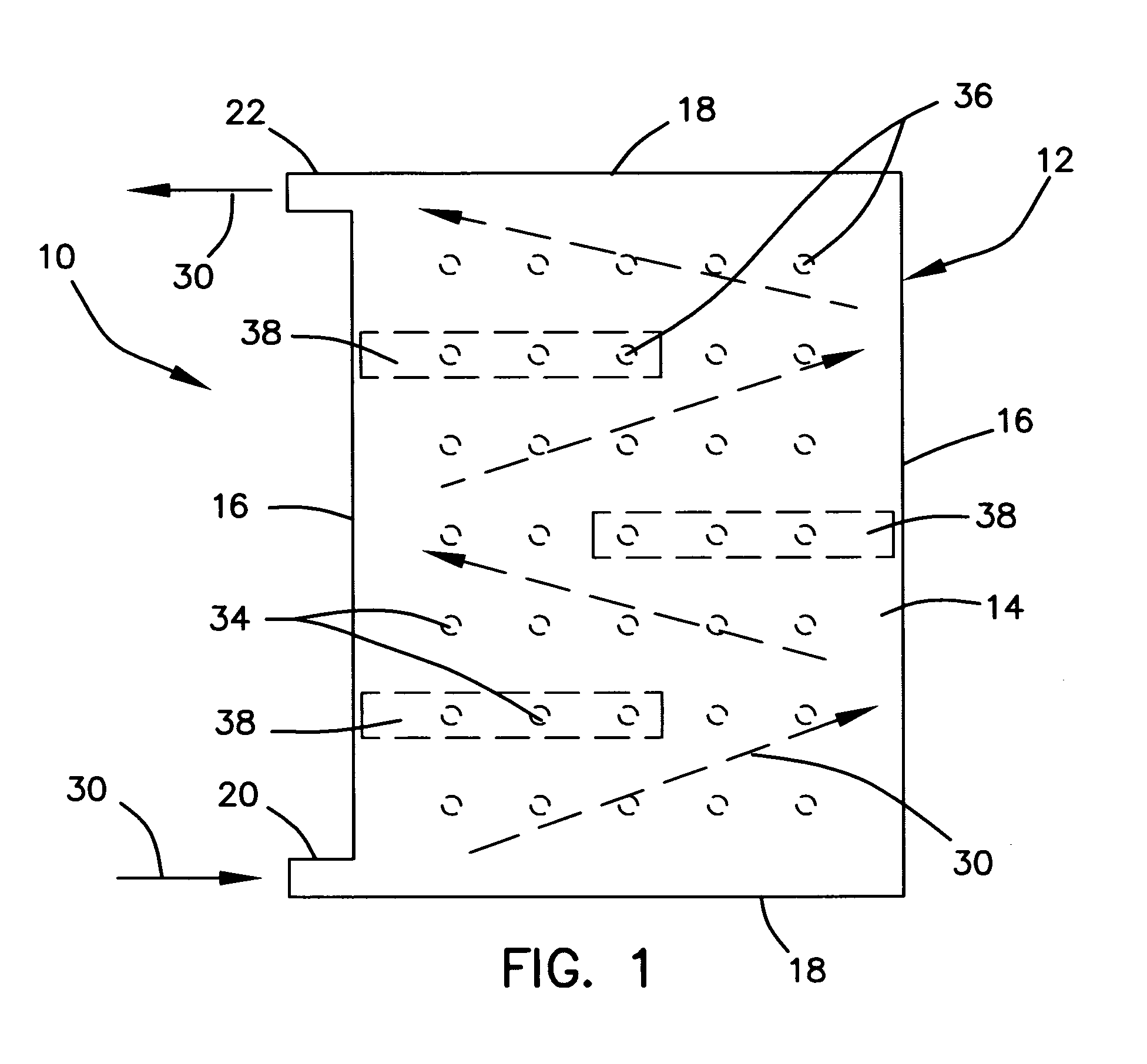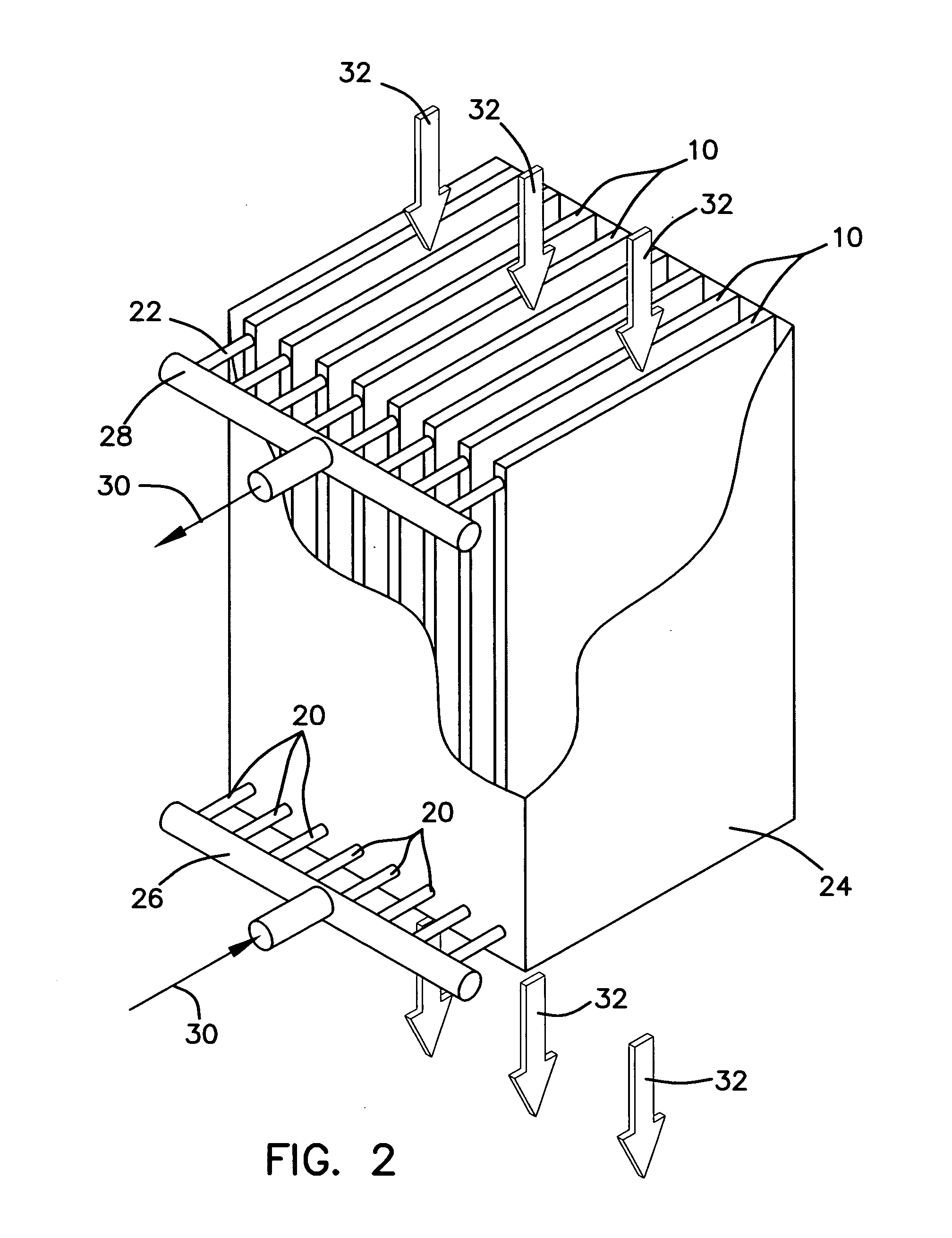Flat heat exchanger plate and bulk material heat exchanger using the same
a heat exchanger and bulk material technology, applied in the field of flat heat exchanger plates, can solve the problems of reducing the heat exchange efficiency of the heat exchanger, reducing the flow of material through the heat exchanger, and ultimately losing production, so as to prevent the interior distance between the sides of the plates from increasing, less expensive, and less heavy duty
- Summary
- Abstract
- Description
- Claims
- Application Information
AI Technical Summary
Benefits of technology
Problems solved by technology
Method used
Image
Examples
third embodiment
[0078]Referring now to FIGS. 11, 12 and 13, which illustrate the flat heat exchanger plate 10 of the present invention and an additional example of a flow diverter assembly 38 for use with a tapered or parallel plate. The flow diverter assembly 38 of this embodiment includes a plurality of tapered flow diverter strips 70 which are interlocked with a plurality of flow control strips 72. Preferably, the flow control strips 72 and the tapered flow diverter strips 70 are interlocked orthogonal to each other. The flow control strips 72 include a plurality of reduced sections 74, which are formed to be positioned between adjacent tapered flow diverter strips 70 and serve to control the amount of heat exchange medium that passes each flow control strip. The flow diverter 38 of this embodiment is also used to prevent the tapered plate 10 from collapsing under negative operating pressure. Pressure restraint members 36 (not illustrated) may also be used in the same manner as described previou...
fourth embodiment
[0079]Referring to FIGS. 13b and 13c, which illustrate the flat heat exchanger plate 10 of the present invention and an additional example of a plurality of flow diverters 38 for use with tapered or parallel flat heat exchanger plate. The flow diverter 38 of this example is a tapered or parallel strip of material formed in a serpentine shape and includes a heat exchange medium flow control leg 39. The flow control leg 39 restricts the flow of heat exchange medium into each chamber 41 to ensure an even flow rate of heat exchange medium within each chamber across the plate. The flow diverter 38 of this example is also used to prevent the plate 10 from collapsing under negative operating pressure. In addition to the flow diverters 38, pressure restraint members 36. not illustrated, can be used in the same manner as previously described to prevent inflation of the plate 10 and to aid in the positioning of the flow diverters 38 within the plate.
[0080]Turning to FIGS. 14 and 15 a fifth me...
PUM
 Login to View More
Login to View More Abstract
Description
Claims
Application Information
 Login to View More
Login to View More - R&D
- Intellectual Property
- Life Sciences
- Materials
- Tech Scout
- Unparalleled Data Quality
- Higher Quality Content
- 60% Fewer Hallucinations
Browse by: Latest US Patents, China's latest patents, Technical Efficacy Thesaurus, Application Domain, Technology Topic, Popular Technical Reports.
© 2025 PatSnap. All rights reserved.Legal|Privacy policy|Modern Slavery Act Transparency Statement|Sitemap|About US| Contact US: help@patsnap.com



